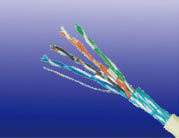Diode Laser Hair Removal: Benefits, Risks, What to Expect
Are you looking for a safe, fast and effective method to get rid of that unwanted facial or body hair? Well, look no further. 808nm diode laser hair removal machine has the answer to smooth, , and confident skin! You don't have to worry about razor bumps, shaving creams, waxing, tweezing and ingrown hairs with laser hair removal. An FDA-cleared, convenient, and non-invasive method for reducing unwanted facial or body hair. High power diode laser hair removal can treat small to large areas effectively with minimal discomfort and with no downtime. The treatment is typically performed by a qualified, trained medical provider such as a dermatologist (a specialist in conditions of the skin, hair, and nails) or a plastic surgeon.
Most people experience excessive or unwanted hair growth at some point in life. People may opt for diode laser hair removal for comfort and convenience, cosmetic reasons, or medical reasons. Diode laser hair removal can treat several areas of the body and face, including the upper lip, legs, back, chest, and pubic area. Professional laser hair removal machine is generally safe, but it may have some side effects. It's important to discuss risks as well as the cost of treatment with your healthcare provider when considering diode laser hair removal.
Is diode laser hair removal safe for all skin tones?
It can be, but no matter your skin tone, it's crucial to vet your diode laser hair removal provider to avoid unwanted side effects. If you have melanin-rich skin, you'll have to ask more questions about the type of laser that's being used during the treatment. (Laser hair removal typically caters to people with dark hair and fair skin, as the stark contrast between the skin pigment and hair is what the laser can more easily recognize and target.) For example, some providers use IPL (intense pulsed light) technology for hair removal, which targets melanin to destroy the hair follicle after repeated treatments, these devices can cause hyperpigmentation and hypopigmentation in deep skin tones. (Hyperpigmentation and hypopigmentation are darker spots and lighter spots on the skin, respectively.)
When it comes to laser-induced skin discoloration, there are risk factors beyond having a naturally deep skin tone. Having sun-kissed skin from a recent vacation or summer of poolside lounging can create a higher risk of skin discoloration since there's a temporary increase of melanin. For lasers that rely on melanin as a recognized target, there's an increased risk that the laser will detect that pigment, resulting in heat energy delivered to skin instead of the hair. In other words, it might be best to schedule your laser treatment before your big trip, and stay out of the direct sun (and wear sunscreen outdoors, but that's an always rule) as much as possible right before your appointment. If you happen to get a tan, let it completely fade before any laser hair removal.
How does laser hair removal works?
"Laser" is an acronym for light amplification by stimulated emission of radiation. It is a handheld device that can control how energized atoms (the smallest particles of an element) release photons, or particles of light. During a laser hair removal treatment, the laser removes hair by vaporizing the hair follicles. The diode laser targets pigment, or melanin, in the hair by emitting light with wavelengths 808nm, which is the level of light melanin can absorb. The melanin captures the energy from the laser and distributes it to the surrounding follicular structures, which destroys the hair matrix (cells that help grow the hair follicle) and stem cells in the bulge of the hair follicle.
There are a variety of lasers that can be used for hair removal. These include:
#Ruby laser: Synthetic ruby crystals that deliver red light, which is effective for lighter skin types with dark hair.
#Diode laser: Suitable for all skin types, this type of laser penetrates more deeply and results in less damage to the skin.
#Intense pulse light (IPL) or broadband light (BBL): These are high-intensity pulses of multicolored light delivered by a flash lamp. These can be used on darker skin and also cover larger areas of the body.
#Alexandrite laser: This type of laser is good for removing lighter-colored hair and penetrates more deeply into the skin.
Neodymium-doped yttrium aluminium garnet (Nd: YAG) laser: Suitable for all skin types, this laser provides better into the skin and less skin damage.
Benefits of diode laser hair removal
There are many benefits to diode laser hair removal, including:
1.Long-lasting hair removal.
2.Quick and safe removal of hair.
3.Ability to treat larger areas of the body.
4.Removal of hair from almost any part of the body.
5.Few side effects and complications.
Diode laser hair removal may help address certain medical conditions. For example, acne keloidalis nuchae is inflammation of hair follicles on the scalp or neck that can lead to thick, raised scars called keloids. In certain cases, diode laser hair removal has been shown to help reduce the symptoms by destroying the hair follicles. For the same reasons, laser hair removal may help treat pseudofolliculitis barbae, another inflammatory disorder of the hair follicles that can cause hairs to become ingrown in areas of shaving, such as the armpits or face. Diode laser hair removal is most effective when it's used on individuals with lighter skin and dark hair. As technological advancements continue in diode laser hair removal, researchers are hoping to develop laser hair technology that provides permanent and complete hair removal for all skin and hair types.
Hormonal status also plays a role in how well and how long hair removal results may last. People with hormonal conditions may want to wait for laser hair treatment until they achieve hormone balance. This might include conditions like hirsutism (when higher levels of androgens, or male hormones, lead to excess hair around the mouth and chin area), hypothyroidism (underactive thyroid), or hyperthyroidism (overactive thyroid). During the initial pre-appointment consultation, a medical provider can discuss whether diode laser hair removal will be an appropriate and effective hair removal option for you.
Risks and side effects of diode laser hair removal
Diode laser hair removal is typically a safe procedure with few side effects. Some of the side effects of diode laser hair removal include slight redness of the skin, mild swelling around hair follicles, temporary changes in skin pigmentation (especially in people with darker skin), and temporary skin irritations such as blistering, scarring, or changes in skin texture. The procedure has been shown to be ineffective for thin, fine hairs (or peach fuzz), and hairs that are white, grey, or red. There are also more side effects reported in people with darker skin types.
In some cases, more serious side effects can include burning, scarring, folliculitis (infected or inflamed hair follicles), and permanent changes to skin color. More serious side effects tend to occur when the technician performing the procedure does not have enough experience in safe and effective laser hair removal practices. To reduce your risk of skin damage, it's important to choose a medical professional who is highly educated in using lasers to perform the treatment.
What to expect at a diode laser hair removal appointment
To ensure the safest and most effective diode laser hair removal experience, it's important to prepare for your appointment and follow after-care instructions.
How to Prepare:
Before getting a diode laser hair removal treatment, you will first meet with a medical provider or dermatologist for a consultation. The provider will evaluate your skin and hair type in order to choose the right laser for your skin and hair color. During your consultation, the provider will ask about your medical history and which areas you want treated. They may also take photographs of the areas you want treated and evaluate whether you have any pre-existing health or hormonal conditions or other risk factors. Then, they will determine the best course of treatment and provide you with a cost for treatment.
In advance of your procedure, avoid plucking or waxing for six weeks. If you are having hair removed from an area you frequently shave, leave a bit of stubble before the procedure, which will provide enough target for the laser without absorbing too much energy in the hair shaft. You should wear sunscreen daily for four to six weeks before your procedure, especially on the exposed areas being treated. It's also recommended to avoid sunless tanners as well as tanning in the sun or in tanning beds.
During the Procedure:
Several steps take place during a diode laser hair removal session. The length of treatment depends on the size of the area being treated. For example, treating a large area like the back may take more than an hour, but a smaller area like the upper lip may only take a few minutes. Most people will need approximately six to eight sessions, spaced six to eight weeks apart, to see long-lasting results. Some people may need maintenance treatments once every six to 12 months to treat small, fine hairs that return.
Here's how a treatment typically works:
1)The hair removal technician will cleanse the area of skin that will be treated to remove any dirt or excess oils.
2)Some people with sensitive skin may receive a numbing gel about 30 minutes to one hour in advance of treatment to minimize any potential discomfort.
3)Both the medical provider and the person receiving treatment will receive eye protection to wear during the course of treatment. This is an essential safety step to protect your eyes from exposure to the light from the laser, which could otherwise damage your eyes.
4)The treatment begins. Your medical provider will pull the area of skin taut and hold the laser to the skin at a perpendicular angle. They will press the laser down gently but firmly on the skin to ensure the hair follicles are close to the laser's surface.
5)Once the laser is in position, the medical provider will emit laser pulses to vaporize the hair follicles. This can produce small plumes of smoke with a sulfur-like smell. You may experience some temporary discomfort during treatment. Laser pulses typically feel like a rubber band being snapped against the skin or like warm pinpricks.
Aftercare and Recovery:
After diode laser hair removal treatment, your provider will share tips to help you reduce any pain or discomfort and promote healing of the skin. Some ways to care for your skin after treatment include:
1.Protecting your skin from the sun and wearing sunscreen or sun-protective clothing or gear.
2.Using ice packs or cool compresses after treatment to minimize any pain, swelling, or discomfort.
3.Applying topical steroid creams to minimize redness and swelling, if necessary.
4.Applying topical antibiotics, if injury to the skin occurs.
The amount of time hair removal lasts until the next session varies, but the average hair clearance rate with current hair removal technology is 20%-75% after one to six months of follow-up treatments. When there is a marked decrease in the number of thick, coarse hairs in the area of treatment for a period longer than the complete hair growth cycle, the results are considered permanent. People with thick, dark hair, light skin, and normal hormonal status are more likely to see permanent results.
Cost and considerations
The cost of diode laser hair removal depends on several factors, including the size of the area being treated, the number of sessions you need, whether prescriptions are needed for aftercare, and whether it's priced as part of a package or per session. Generally, laser hair removal is not covered by insurance because it is considered a cosmetic treatment. However, there are some instances where the procedure may be considered medically necessary and be covered by insurance.
To avoid side effects and potential risks of the treatment, it's important to find a qualified medical professional, such as a board-certified dermatologist or plastic surgeon, to perform the procedure.
A quick review
Diode laser hair removal is a largely safe and effective medical procedure that removes unwanted hair from the face and body. In some individuals, laser hair removal can produce permanent results after a few sessions, but some people may continue to need follow-up treatments. Research is ongoing to develop lasers that can remove hair permanently for people of all skin types and hair colors.
Personne à contacter : Best Bvlaser, 0086 19503862093
Bonne affaire : acheter au vendeur
Nous vous invitons à lire nos conditions générales d'utilisations. Vous pouvez aussi vous rendre sur nos FAQ et consulter notre page d'informations sur les risques liés à la contrefaçon.
|
Cette page concerne les importateurs et exportateurs de Diode Laser Hair Removal: Benefits, Risks, What to Expect Rechercher dans la catégorie : Médical Rechercher dans la catégorie : what, hair, risks, diode, laser, benefits, removal |
Mardi 08 mars 2016
Quantité : 100~500
Bubble Bath Spa Massager MSW-104 Bubble Bath Spa Massager is a new generation of home spa massager and is optimized for use in bath with the quality of tranquility, relaxing and luxury life. Configuration of MSW-104 is One-Touch Control Panel with Minimal and fashionable design...
LienJie International Ltd.
- 414 - Taichung City
- +886 4 23367128
Jeudi 27 mars 2025
Prix : 650usd
Nous déclarons que nous sommes prêts, disposés en mesure de fournir et vendre de grade «A» Pieds de poulet transformés . Nous avons une certaine quantité raisonnable du produit à vendre . Voici les détails de notre produit de notre usine et nos conditions de vente : Produit : Pieds...
setecstra
- 843 - abidjan
- +22 5 49 87 56 63
- +225 04619689/498756
Mardi 24 novembre 2015
Quantité : more than
Application The cables are similar in design and application to CW 1308, but with Low Smoke Halogen Free cores and sheath. CW 1600 has the added advantage of an Aluminium/Polyester foil screen and drain wire. A fire barrier tape is included on cable with more than 6 pairs. The cables...
caledonian cables limited
- 999077 - hongkong
- +85 2 21 16 10 40
- 852 21161040









